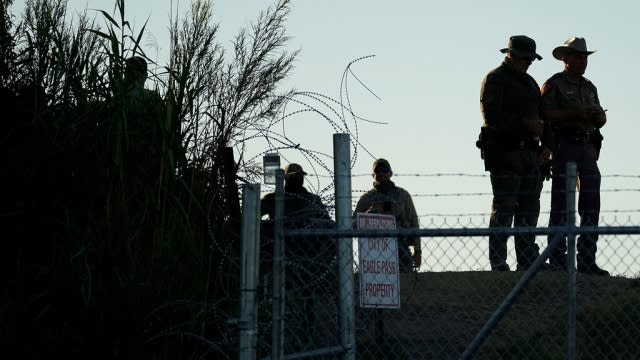Justice Department goes to the Supreme Court over Texas border closure

The Department of Justice wants the Supreme Court to stop Texas from blocking federal Border Patrol agents from a portion of the U.S.-Mexico border near Eagle Pass, southwest of San Antonio.
Texas state troopers on Thursday fenced off a public park in Eagle Pass, prompting objections from city officials — and the new filing from the Justice Department.
The Justice Department said armed Texas National Guard members have blockaded access roads to the area, which "effectively prevents" Border Patrol agents from getting to or monitoring a roughly 2.5-mile stretch of the border.
The Border Patrol has used the park as a place to launch boats into the Rio Grande River, and as an area to process migrants that are taken into custody.
Texas had notified Eagle Pass of the park closure on Wednesday.
SEE MORE: NY school forced to go remote so migrants can be housed during storm
The closure is the latest step in Operation Lone Star, Texas' aggressive campaign of often controversial immigration-control measures, which have included the deployment of buoys in the Rio Grande as well as the erection of razor wire fencing on private property along the river.
In December Texas Gov. Greg Abbott signed a new law that allows police to arrest those who cross illegally into the U.S. The law is expected to face legal challenges related to the federal government's legal authority over U.S. immigration control.
Abbott has continued to defend the execution of Operation Lone Star.
In recent comments on a radio talk show, he alluded to the extent Texas would go to secure the border.
"The only thing that we’re not doing is we’re not shooting people who come across the border, because of course the Biden administration would charge us with murder," Abbott said.
Abbott said Friday the comment was meant to illustrate "where the line is drawn" in what Texas could legally do to control border crossings.
